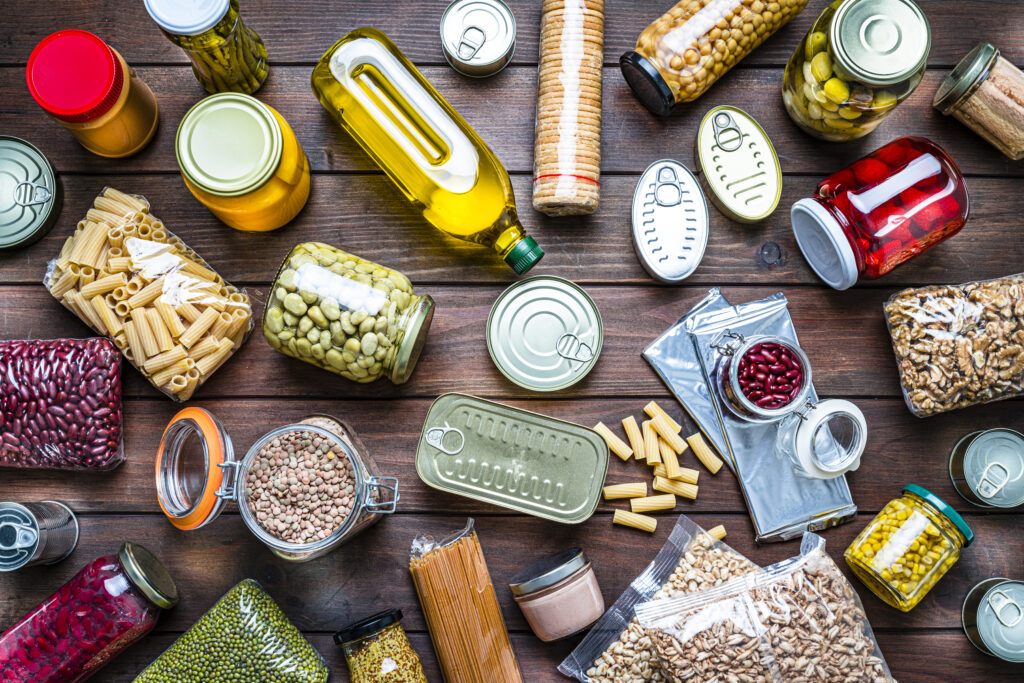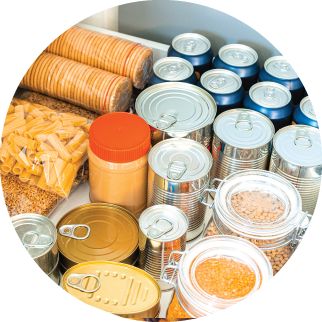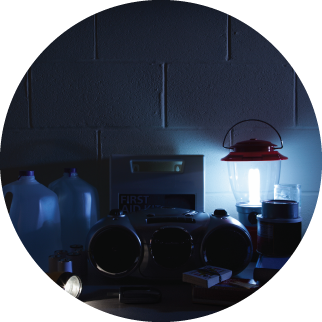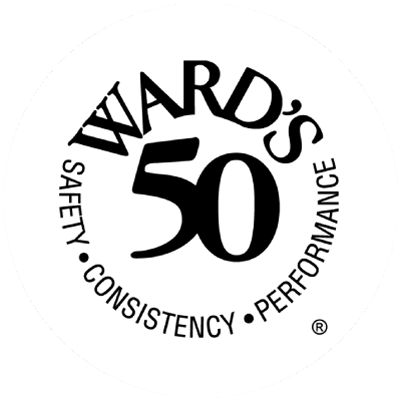Tips for Food Safety During a Hurricane or Other Emergency
Did you know that September is both National Food Safety Education Month and National Preparedness Month?
According to the Centers for Disease Control and Prevention (CDC), one in six Americans experience food poisoning each year. National Food Safety Education Month serves as an annual reminder of the importance of following food safety best practices to prevent illness!
As National Preparedness Month, September also reminds us that disaster can happen at any time. In fact, September is the height of hurricane activity! While hurricane season in the Atlantic lasts from June through November, most hurricane activity occurs between mid-August and mid-October, peaking on or around September 10th.
This September, we encourage you to prepare for disaster by learning how you can stay food-safe during a hurricane or other emergency!
General Food Safety Tips
It’s always important to follow basic food safety practices. Healthy habits help prevent food poisoning, which can make anyone sick, especially more vulnerable people such as older adults, young children, pregnant women, and immunocompromised individuals.
Always follow these four simple food safety tips from the CDC:
-
- Wash your hands, utensils, and surfaces often when you cook.
- Meat products (raw meat, poultry, seafood, and eggs) can spread germs. Keep them away from cooked food and fresh produce.
- Cook food to an internal temperature that kills germs; use a food thermometer to check.
- Refrigerate perishable foods and leftovers within two hours, and if it’s above 90°F, chill within one hour.
Food Safety During an Emergency
But how do you stay “food safe” in case of an emergency or disaster?
Hurricanes can cause flooding, power outages, structural damage, and more, all of which can affect our access to safe food. Learn the best practices for food safety before, during, and after emergencies such as floods, fires, natural disasters, or loss of power.
Before an Emergency
Preparing Your Emergency Food Supply
Before disaster strikes, prepare an emergency food supply. It’s a good rule of thumb to keep at least a 3-day supply of food for each person and pet in the household.
Make sure your food:
- Has a long shelf life
- Requires little or no cooking, water, or refrigeration
- Is appropriate for those in your household, including babies or adults with special dietary needs
- Includes the needs of pets
- Is not very salty or spicy (salty and spicy foods increase the need for drinking water)
Ready.gov recommends food items such as: protein bars, dry cereal or granola, peanut butter, and ready-to-eat canned foods (and pack a can opener!).
Click here for a full list of food recommendations.
Storing Your Emergency Food Supply
Proper storage conditions can increase the shelf life of canned or dried foods.
When storing your emergency food supply, follow these tips:
- Store food in a cool, dry, dark place between 40° and 70°F.
- Check the expiration dates on canned foods and dry mixes. Home-canned food usually needs to be thrown out after a year.
- Use and replace food before its expiration date.
- Food stored in boxes or paper containers will be usable longer if it’s heavily wrapped or stored in waterproof, airtight containers.
- Remember that hurricanes often cause flooding; store food on shelves that will be out of the way of storm waters.
Preparing an Emergency Water Supply
- Have on hand at least 1 gallon of water per day for each person and each pet. Store more if your family has ill or pregnant members.
- If your bottled water has an odor, do not drink or use it.
- Check the expiration date for store-bought water, and swap out other stored water every 6 months.
- Store a bottle of unscented liquid household chlorine bleach to disinfect your water and to use for general cleaning and sanitizing. The amount of active chlorine in bleach decreases over time, so the bottle should be replaced each year.
Preparing for a Power Outage
- Use appliance thermometers in your refrigerator and freezer. The freezer should be at or below 0° F, and the refrigerator should be at or below 40° F.
- In advance of a disaster, make ice cubes, freeze gel packs and containers with water to help keep food cold in the freezer, refrigerator, or coolers. Store these items in the freezer to be used later in the refrigerator or coolers.
- The melting ice in the containers of water will also supply safe drinking water.
- Freeze refrigerated items such as leftovers, milk, and fresh meat and poultry that you may not use immediately.
- Help food stay cold for longer by grouping items together.
- Use coolers if the power might be out for more than 4 hours.
During an Emergency
If you lose power…
- Keep the refrigerator and freezer doors closed to keep the temperatures cold.
- A refrigerator will keep food cold for about 4 hours if unopened.
- If the door is kept closed, a freezer that is full will keep the temperature steady for about 48 hours, but only 24 hours if half-full.
- Make sure to thoroughly cook all items to destroy any foodborne bacteria. If at any point the food was above 40º F for 2 hours or more (or 1 hour if the temperature was above 90 º F), throw it out.
- In a snowstorm, don’t use the outdoors to keep perishable food cold, as temperatures may fluctuate and conditions can be unsanitary due to wild animals.
After an Emergency
Determining if your food is still safe
- Check the appliance thermometer in your refrigerator and freezer when the power is restored. If the freezer thermometer is at 40° F or below, the food is safe and may be refrozen.
- If a thermometer was not in the freezer, check each package of food to determine its safety. If the food still contains ice crystals or is 40° F or below, it is safe to refreeze or cook.
- Refrigerated food should be ok if the power was out for no more than 4 hours and the refrigerator door was kept shut.
- Get rid of any perishable food (meat, poultry, fish, eggs, or leftovers) that has been at temperatures above 40° F for 2 hours or more (or 1 hour if temperatures are above 90º F).
Toss the following foods:
- All perishable foods including meat, poultry, fish, eggs, and leftovers in your refrigerator if the power has been off for 4 hours or more.
- All perishable foods in your freezer if they have thawed.
- Anything not in waterproof containers, such as cardboard packages, including baby formula boxes.
- Comes in containers that have screw-caps, snap-lids, twist caps, or flip tops
- Was home-canned, as these foods cannot be disinfected.
- Anything that has come into contact with storm water.
-
When in doubt, throw it out!
For more information, visit our sources for this blog:
https://www.cdc.gov/foodsafety/education-month.html
https://www.foodsafety.gov/keep-food-safe/food-safety-in-disaster-or-emergency
This blog was originally published on September 21, 2022.







